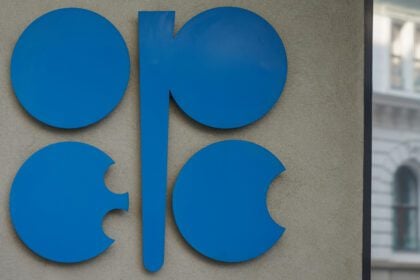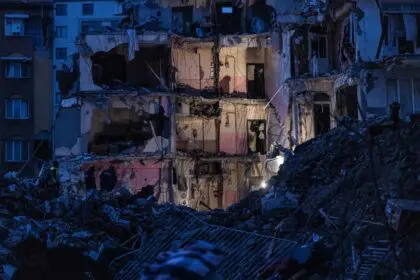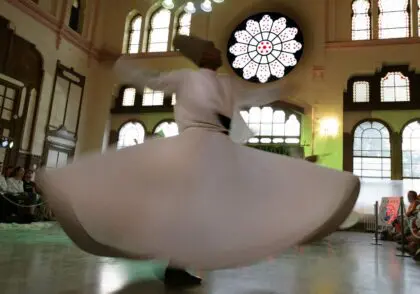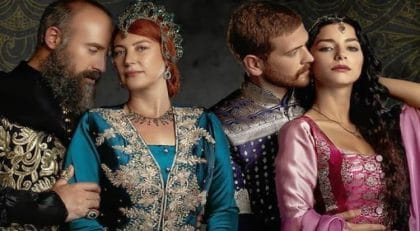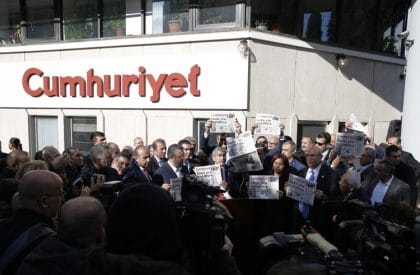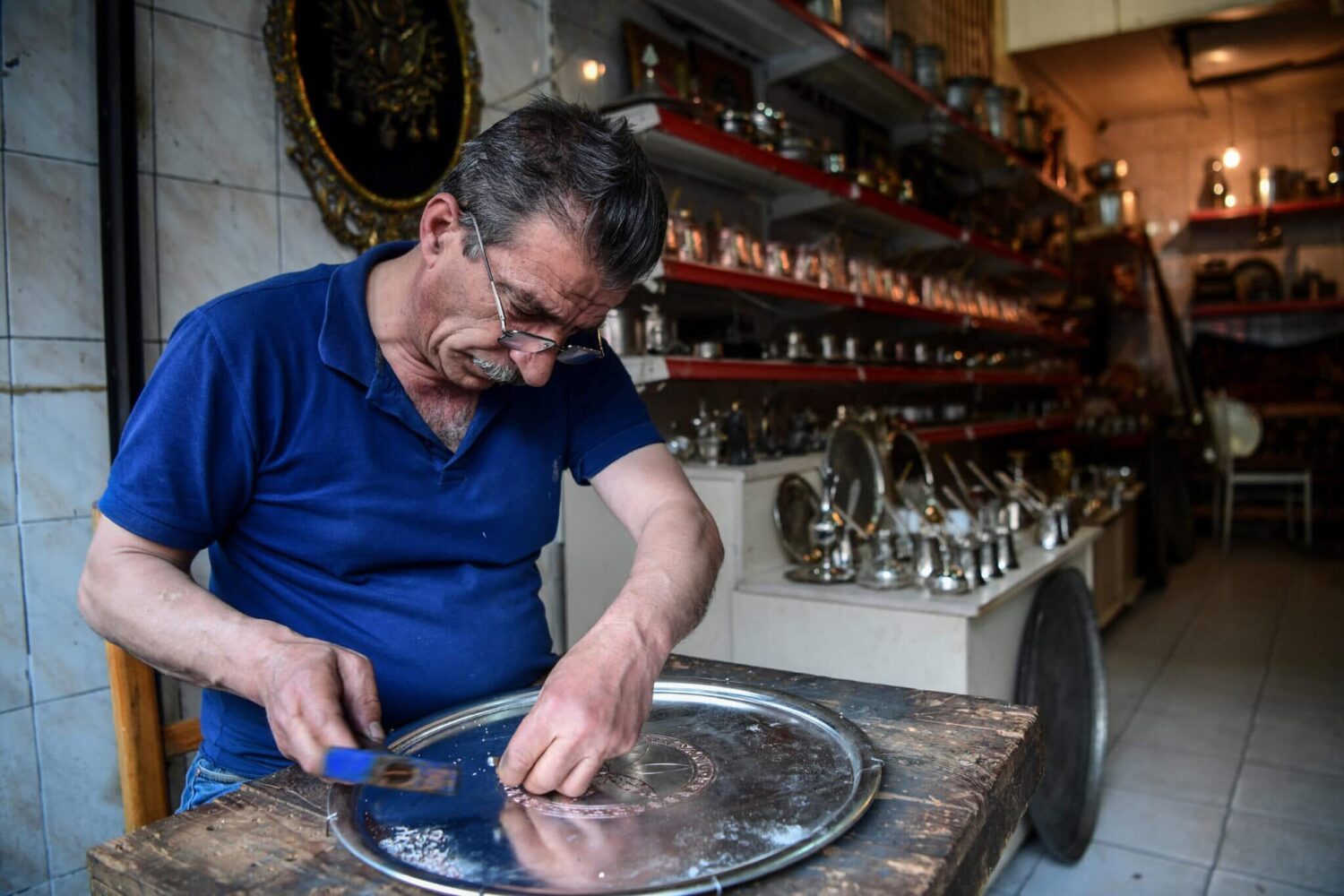
Introduction
The Turkish cultural identity cannot be addressed using a monocular without considering what is Kemalist – as in Mustafa Kemal Ataturk – and what is Erdoganist, or between what is western or eastern, or what is secular and what is Islamic, in addition to the cumulative diversity over the ages as a heritage of successive civilizations. Thus, the Turkish culture is but a mixture of various elements inherited from the Oghuz of Anatolia and the Ottomans, and what they hold from the Greek and the Roman legacies.
Modern Turkish culture is considered a self-combination, for an objective, necessary and inevitable mating between two cultures; the well-established traditional Islamic culture and the modern western culture. The roots of this mixture originated from the Turks and their culture meeting with these peoples on their way during their migration from Central Asia to the West, according to analysts.
For instance, Turkish literature and music reflect this mixture of cultural impacts, which were consequential from the interaction between the Ottoman Empire and the Islamic world, side by side with Europe. And thus, came the traditional and modern literature with the birth of modern Turkey, with remarkable nostalgia and penchant to the Ottoman past, and the underlying eastern identity; this nostalgia that turned into a dominant feature of the literary and artistic scenes.
The architectural arts found in Turkey are also evidence of the unique mixture of traditions that have influenced the region over the past centuries. In addition to traditional Byzantine elements speaking in many parts of Turkey and many later Ottoman architectural masterpieces, with an intertwining fabric of local and Islamic traditions.
According to researchers, Turkish fine arts cannot be addressed without passing by orientalist art, then Islamic arts, Arabic calligraphy, miniature painting, and ornament art, which helped develop modern arts intellectually, emotionally, and conceptually from the Turkish interior, and it helped maturing this experience and giving it a specificity that turned it into a reference consistent with the nature of its dual and culturally diverse affiliation.
There is no denying that Turkish music was not excluded from the said mixture between what is eastern and western. Turkish music was able to adopt several various musical patterns, as an observer of the musical heritage in Turkey can see the enrichment of ethnic diversity, such as Kurdish, Armenian, Azerbaijani, Greek and Albanian ethnics.
After its emergence in the 1960s, the Turkish cinema became widely popular, which became a real political weapon with the help of Yılmaz Güney (1937-1984), who directed movies such as “Hope”, “Friend”, “Herd” and “Yol”, which won the Palme d’Or at the Cannes Film Festival in 1982.
To learn more about the culture of Turkey with all its various aspects, check what Fanack has covered about this file.
Classic Literature
The term ‘classical’ refers to two types of literature, scholarly and popular, that appeared before the Westernization process that reached its peak during the reforms of the Tanzimat (1839-1876). The first type, known as the divan literature (Divan Edebiyatı) (Ottoman poetry) and strongly influenced by the Arabic and Persian languages from which it draws its vocabulary and style, is best expressed in poetry. Court poetry, consisting of stanzas of two or four lines rich in allegory, is the essence of this literature and focuses on skilfully composed rhymes and measures. Baki (1526-1600), Fuzuli (c.1483-1556), Nedim (c.1681-1730), and Nefi (1572-1635) are considered pioneers of this literature, whose golden age was in the 16th century. Nefi is especially known for his satirical poetry. Şeyh Galip (1757-1798) is considered the last of the great classical poets. Prose required important intellectual and encyclopaedic resources. It narrates journeys, as in the case of the book Seyahatname by Evliya Çelebi (1611-1682) and the chronicles of historians Mehmet Neșri (died c.1520) and Mustafa Naima (1655-1716). Finally, the political-historical treatises, which evoke the stories of princes, such as those by Koçi Bey (died 1650) and Katip Çelebi (1609-1657), are considered part of this type of classic literature.
The classic popular literature, of which Yunus Emre (c.1240-c.1321) is considered a pioneer, is distinguished by the accessibility of its language and its references, which are often of Sufi origin. Beginning with the challenges of the Alevi or Qizilbash communities in the 16th century against the relatively egalitarian Turkmen tribes and inspired by the messianic Persian Shiites in the Ottoman Empire, this poetry also emphasized the doctrine of vahdet-i vücud (unity of existence), opposed by the Sunni religious establishment, which gave birth to the Alevi oral literature, as exemplified by the work of the 19th-century mystic poet Edib Harabi (1853-1917): ‘While God and the universe did not exist We have created and proclaimed them to be. While there was still no space worthy of Him We welcomed God into our home as a guest. He did not have a name yet. What am I saying? He did not even exist. He had neither clothes nor appearance. We gave Him form to make Him human.’
Modern Literature
The history of modern literature can be divided into two periods separated by a wide gap corresponding to the Kemalist era, which produced only a few important works. The first period covers the last decades of the 19th century, which can be called, according to famous writer Ahmed Hamdi Tanpınar (1901-1962) and sociologist Hilmi Ziya Ülken (1901-1974) ‘the rift’. Many authors of this period, such as İbrahim Şinasi (1826-1871), Ziya Paşa (1825-1880), and Namık Kemal (1840-1888), known as ‘the heroes of freedom’, introduced the ideas of freedom and fatherland and practiced social criticism. However, the Westernization process led to what Ülken described as a ‘dual personality’, represented by authors such as Ahmed Midhat (1842-1912), Sami Paşazade Sezai (1859-1936), and Recaizade Mahmud Ekrem (1847-1914), who expressed their discomfort with their ‘oriental’ being and their ‘Western’ ‘non-being’, and a deep melancholy regarding the abyss that awaits them. The end of this period witnessed the birth of the modern poetry that spanned from Tevfik Fikret (1867-1915) – atheist and freethinker who rebelliously praised the attempt on the life of Sultan Abdülhamid II (which the ‘Red Sultan’ survived) – to Mehmed Akif Ersoy (1873-1936), a proponent of the neo-Salafi movement at the turn of the 20th century.
The period of the Committee of Union and Progress (1908-1918) was marked by the birth of anationalist literature, popularized in a language mastered by authors such as Ömer Seyfettin (1844-1920), Mehmed Emin Yurdakul (1869-1944), Ziya Gökalp (1876-1924), and Yakup Kadri Karaosmanoğlu (1889-1974). With few exceptions – such as Nazım Hikmet (1902-1963) and Sabahattin Ali (1907-1948), the first forced into exile, the other murdered – the Kemalist decades (1923-1945) were marked by a literature of nationalist propaganda, dedicated mainly to the deification of the Eternal Leader.

At the end of single-party rule, a new period of Turkish literature began, with the emergence of a popular ‘peasant’ style sensitive both to traditions and legends and to past tragedies, as seen in the work of Fakir Baykurt (1929-1999), Dursun Akçam (1930-2003), and Yaşar Kemal (born 1923). These prose works find their counterpart in poetry such as the ‘Blue Cruises’ (Azra Erhat, 1915-1982), Sabahattin Eyüboğlu, (1908-1973) inspired by Anatolia. In the 1960s, a new melancholic style reflecting the disappointment of a generation of Westernized intellectuals emerged in the works of Sevgi Soysal (1936-1976), Adalet Ağaoğlu (born 1929), and Oğuz Atay (1934-1977); the latter defines Turkish intellectuals as ‘the disconnected’, a species that cannot hold onto anything and is therefore condemned to fall. It was on the foundation of this rich heritage that the 1990-2000 generation emerged, including Elif Şafak (born 1971), author of The Bastard of Istanbul, (written in English), that created a scandal around the denial of the Armenian Genocide (and Orhan Pamuk (born 1952), the winner of the Nobel Prize in Literature in 2006 and explored both Ottoman history (My Name is Red) and the recent history characterized by violence (Cevdet Bey and His Sons, The Black Book, and Snow). Finally, after a long period of interdiction, Kurdish literature was reborn in exile in Europe and then in Turkey itself. One of its most important figures is Mehmed Uzun (1953-2007). The same period witnessed the birth of a new type of Turkish literature, written by Armenian authors (such as Mıgırdiç Margosyan, born 1938) and Jewish authors (such as Roni Margulies, born 1955).
Music and Dance
Music in Turkey is varied, including an old double tradition of türkü (folk songs) and şarki (lit. ‘Eastern’, light songs, often for the court). Considered degenerate and of Byzantine or Arabic origin, these songs were banned between 1934 and 1943. They have gained great popularity in the last few decades, not as the ‘authentic’ genre appreciated by the elite, but as the arabesque genre, combining traditional, Westernized popular instrumental styles. Singers such as Orhan Gencebay (born 1944) and İbrahim Tatlıses (born 1952), who are popular with the public, are two stars of fusion music.
There are several other styles besides the unrivalled arabesque music, including pop (e.g., Tarkan Tevetoğlu, born 1972), rap, which became popular in the 1990s, and protest music, such as that performed by the left-wing GrupYorum (‘Interpretation Group’). Protest music carries on a tradition beginning with Ruhi Su (1912-1985), a former opera singer who performed mystical and Alevi songs but also proved himself a creator of new musical styles, inspired by European and Latin American protest styles. This music is a part of a wider folkloric corpus, including popular dances. Finally, several groups, such as Kardeş türküler (Songs of Fraternity) are trying to ‘revive’ Anatolian folksong by performing Armenian, Greek, Sephardic, and Kurdish songs.
Western classical music was considered by the Kemalist authority the only music reflecting the ‘Turkish spirit’; the State Opera and Ballet, a public agency, operates six operas (Ankara, Istanbul, Izmir, Mersin, Antalya, and Samsun) and organizes several festivals. Despite a loyal audience and the emergence of several pianists on the international scene, such as İdil Biret (born 1941) and Fazıl Say (born 1970), Western classical music has played a minor role on the Turkish music scene.
Traditional Arts
Turkey is rich in traditional handicrafts, particularly textiles and lace, jars, wood, copper, porcelain, ceramic and earthenware, glass, and stone. Several sites such as Beypazarı and Trabzon are famous for their work in silver and gold. Several sites specialize in tapestry (carpets and the famous kilims).
The Esnaf ve Sanatkarlarır (Craftsmen and Tradesmen) department of the TİSK confederation had, in 2008, around two million members, which shows the importance of this sector in most parts of the country. Most of the crafts are intended for internal consumption, but there is also a great demand for these crafts among tourists.
Fine Arts

The fine arts in Turkey have been evolving for more than a century. This new style of representation, illustration, and expression, of Western inspiration, goes back to the end of the Ottoman Empire. It was given a real impetus by the oriental work of Osman Hamdi Bey (1842-1910), known also as the founder of Turkish museology. Under the Kemalist republic, painters trying to escape the official aesthetics dedicated entirely to the celebration of the nation and its ‘father’ Mustafa Kemal – such as Zeki Kocamemi (1900-1959), Ali Çelebi (1904-1993), Refik Epikman (1902-1974), Bedri Rahmi Eyüboğlu (1911-1975), Fikret Mualla (1903-1967), Nuri İyem (1915-2005), and İbrahim Balaban (born 1921) – devoting themselves to abstract styles or folkloric and popular styles. In the 1960s and the 1970s, a new style, combining the engaged art and the elitist aesthetics emerged in the works of artists such as Orhan Taylan (born 1941) and Ferit Öngören (1932-2010). Over the past two decades, many universities, including Mimar Sinan University, Yıldız Technical University (Istanbul), and Dokuz Eylül University (Izmir), have developed art courses, and many museums and galleries dedicated exclusively to Turkish or foreign fine arts have opened their doors in Istanbul (e.g., the Istanbul Museum of Modern Art, the Mimar Sinan University Museum of Fine Arts, and the Elgiz Museum of Contemporary Art). Some young artists, such as Ayşeygül Yeşilnil, Esra Meral Demircan, and İlker Basırlı, whose works combine traditional craft with modern art or integrate several artistic disciplines (e.g., painting and sculpture with the performing arts or music) also began to gain recognition in Europe.
Architecture

To understand the variety of architectural styles in Turkey, we can begin with the pre-Islamic heritage, of which Hagia Sophia (or Aya Sofya) (built in 532-537) and the current Kariye Museum (Church of the Holy Saviour in Chora, built in 534) are among the finest examples. The architecture of the Seljuk Turks, which is rather modest, is to be seen in many cities in the Central Anatolia region. Ottoman architecture, known for its grandeur and exemplified by the works of the famous architect Mimar Sinan (1489-1588), continues these legacies but exceeds them in scale and ambition. Sinan’s work was adapted by other architects, such as Sedefkar Mehmed Agha, who built the famous Blue Mosque in Istanbul between 1609 and 1616. Istanbul witnessed a true architectural revolution in the 18th and 19th centuries, which combined many (especially Western) styles; the Dolmabahçe Palace (1842-1853) and Istanbul University (originally the War Ministry, 1833) are among the most significant examples.
The period of the republic which draws its inspiration from European (especially Italian) styles, has an architecture of grandeur, of which the mausoleum of Atatürk, the famous Anıtkabir (built between 1944 and 1953), is both culmination and transcendence. During this period, People’s Houses and statues with nationalist themes were built in the main square of every large city.
Few works mark the architectural history of post-Kemalist Turkey – numerous American-style malls, housing blocks, and the imposing but unoriginal towers that overlook Istanbul.
Popular Culture
In a country that has been the scene of many socio-economic and political changes in the past several decades, it is difficult to provide benchmarks for ‘popular culture’. From the appearance of recording studios in the 1950s to the explosion of television channels from 1990 to 2000, the notion of popular culture has nearly lost its meaning. Bard festivals have disappeared, as have traditional performances, such as those of Karagöz and Hacivat, the lead characters of the shadow plays that were especially popular during Ramadan but ceased to be ‘popular’ and instead became ‘elitist’ and required significant public subsidies for their maintenance. The same is true of the rich heritage of popular dance; folk dance is repressed by the government or highly politicized by the left- and right-wing parties, the Alevi movement, or Kurdish organizations.
There are three additional registers in present-day popular culture: classic songs performed in a pop style (as by the famous Zeki Müren, 1931-1996); the arabesque, which has been the most common music since the 1960s, performed by singers such as İbrahim Tatlıses (born 1952) and Ferdi Tayfur (born 1945); and television series. Most TV series are soap operas, in which the transgression of moral standards – from demonstrations of homosexuality, to extramarital relationships or adultery – is allowed. They adapted the Brazilian telenovelas of the 1990s with great success, particularly in the Arab world and the Balkans. There are also highly politicized series, such as the famous Valley of the Wolves, an ultranationalist and anti-Semitic series featuring men working behind the scenes and undercover for ‘the country and the nation’ in the war against internal enemies (e.g., the Kurdish movement, minorities, and ‘traitor’ politicians) or foreign enemies (the United States, Israel).
Theatre and Film

There are many public (currently being privatized) and private theatre groups that are sometimes politically engaged, especially in Istanbul. The Turkish ‘sixth art’ has among its historical actors of the Ottoman Empire, such as Güllü Agop (1840-1902) and modern actors, including Genco Erkal (born 1938), Haldun Dormen (born 1928), Toto Karaca (1912-1992), Levent Kırca (born 1948), Müşfik Kenter (born 1932), Adile Naşit (1930-1987), Ali Poyrazoğlu (born 1943), and Gülriz Sururi (born 1929).
Turkey is well known for its films. The emergence of Yeşilçam (the local Cinecittà) in the 1960s popularized Turkish cinema, which became, with the help of Yılmaz Güney (1937-1984), director of films such as Hope, Friend, The Herd, and Yol (Palme d’Or, Cannes, 1982), a real political weapon.
Güney’s style dominated Turkish cinema long after its disappearance, but in the early 21st century, new artistic creations influenced by the New Wave and filmmakers such as Andrei Tarkovsky, appeared, as in Uzak by Nuri Bilge Ceylan (born 1959). The political aspect is not as clearly expressed in these films, but they look critically at the past and the ‘sensitive issues’ of contemporary Turkey, as in the Journey to the Sun by Yeşim Ustaoğlu (born 1960) and Future Lasts Forever by Özcan Alper (born 1975). Also noteworthy is the emergence of the Turkish-German cinema, especially Head On by Fatih Akin (born 1973) and Kurdish diaspora films (A Song for Beko by Nizamettin Ariç, born 1956).
Museums
The first Ottoman museum, created in 1807, was reserved to the sultan until it was opened to the public in 1839. Many cities have museums, but the most important are the Istanbul Archaeological Museum, and the Turkish and Islamic Arts Museum in Istanbul, and the Museum of Anatolian Civilizations in Ankara. Historical sites such as Ephesus and Miletus have their own museums.
Sports
Football is the most popular sport in Turkey. Galatasaray has won the UEFA Cup and UEFA Super Cup in 2000. In addition, the Turkish national team won the bronze medal in the 2002 World Cup, and the 2003 FIFA Confederations Cup. Basketball is also popular in Turkey. The Turkish national team won the silver medal of the 2001 EuroBasket and won the 2010 FIBA Basketball World Cup. Throughout the Mediterranean Games, Turkey won many golden, silver, and bronze medals starting from 1967.
Latest Articles
Below are the latest articles by acclaimed journalists and academics concerning the topic ‘Culture’ and ‘Turkey’. These articles are posted in this country file or elsewhere on our website:


